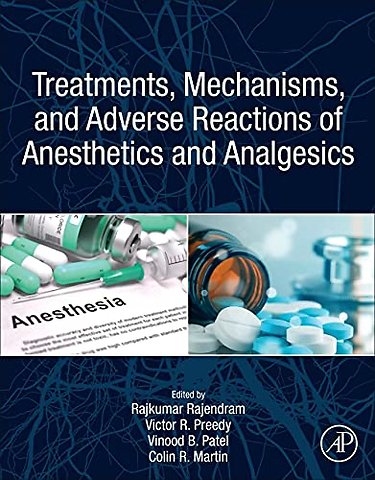<p>I. Drugs and agents used in anesthesia and analgesia<br>1. Anesthesia for malignant hyperthermia susceptible patients<br>2. Use of dextran in regional anesthesia<br>3. Intraperitoneal local anesthetic agents in the management of post-operative pain<br>4. Automatic control of anesthesia via different vital signs<br>5. Non-opioid based analgesia in otolaryngology</p> <p>II. Mechanisms of action of drugs<br>6. Buprenorphine: mechanisms and applications<br>7. Caffeine usage in pain management<br>8. Chloroprocaine: features and applications<br>9. Clonidine: features and applications<br>10. An excursion into secondary pharmacology of fentanyls with potential implications for drug design: σ1 receptor<br>11. Isoflurane: mechanisms and applications<br>12. The lidocaine patch: features and applications: post-thoracotomy pain and beyond<br>13. Memantine: features and application to chronic pain control <br>14. Midazolam: Perioperative administration<br>15. Intravenous paracetamol: features and applications<br>16. Prilocaine: mechanisms and applications<br>17. Sevoflurane: features and use in topical application for wound care<br>18. Tramadol as an analgesic</p> <p>III. Adverse effects, reactions and outcomes<br>19. Long-term effects of anaesthesia on the brain: an update on neurotoxicity<br>20. Neuraxial labour analgesia and breast feeding<br>21. Mechanistic Overview of How Opioid Analgesics Promote Constipation<br>22. Cognitive-behavioral therapy for opioid use disorder and chronic pain<br>23. Preoperative opioid and benzodiazepines: impact on adverse outcomes <br>24. Anesthetics, Malignant hyperthermia syndrome and Kv7 channels<br>25. Problems with epidural catheter<br>26. Headache after neuroaxial blocks: a focus on combined-epidural anesthesia<br>27. Liposomal bupivacaine, pain relief and adverse events<br>28. Adverse events associate with analgesics: a focus on paracetamol use</p> <p>IV. Novel and non-pharmacological aspects and treatments<br>29. Acronychia pedunculata leaves and usage in pain<br>30. Adansonia digitata and use in neuropathic pain: prostaglandins and beyond<br>31. Andrographis paniculata standardized extract (ParActin) and pain<br>32. Capsaicin: features usage in diabetic neuropathic pain<br>33. Cola nitida and Pain reliefLawrence <br>34. Analgesic effects of Ephedra Herb extract and ephedrine alkaloids-free Ephedra Herb extract (EFE)<br>35. Euphorbia bicolor (Euphorbiaceae) Latex Phytochemicals and applications to analgesia <br>36. Pain relieving activity of muntingia calabura l.: elucidation of possible mechanisms of action and identification of responsible phytoconstituents <br>37. Resolving neuroinflammation and pain with Maresin 1, a specialized pro-resolving lipid mediator<br>38. Therapeutic role of naringenin to alleviate inflammatory pain<br>39. Analgesic properties of Solanum paniculatum and S.torvum extracts<br>40. Dietary constituents contribute to local anesthetic agent: neurophysiologicals mechanism of nociceptive pain<br>41. Pain response following prenatal stress and its modulation by antioxidants<br>42. Physical activity and fitness in the prevention of musculoskeletal pain in youth<br>43. Linking aerobic exercise and childhood pain alleviation: a narrative<br>44. Physical activity and exercise in the management of musculoskeletal pain: a focus on fibromyalgia<br>45. Spinal cord stimulation and limb pain <br>46. Effectiveness of neural mobilization on pain and disability in individuals with musculoskeletal disorders <br>47. Virtual reality and applications to treating neck pain<br>48. Virtual reality-induced analgesia and dental pain <br>49. Vibrotactile devices, DentalVibe and local anesthesiaElitsa <br>50. Cooled radiofrequency ablation (CRFA) and osteoarthritis treatment for pain<br>51. Non-pharmacologic analgesic therapies: a focus on photobiomodulation, acustimulation and cryoanalgesia (ice) therapy<br>52. New coping strategies and self-education for chronic pain management: e-health<br>53. Postoperative Pain Management Truncal blocks in obstetric and gynecologic surgery </p>
